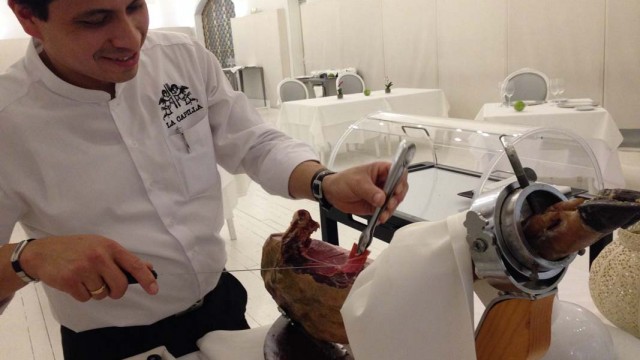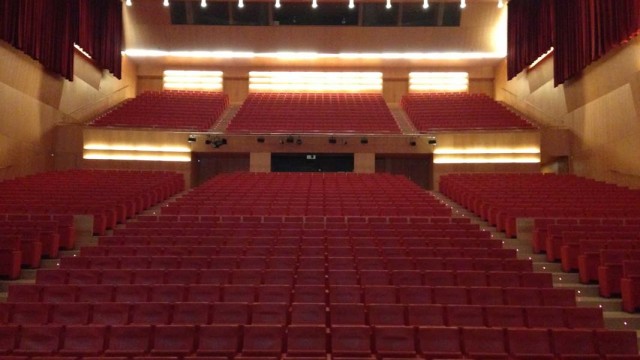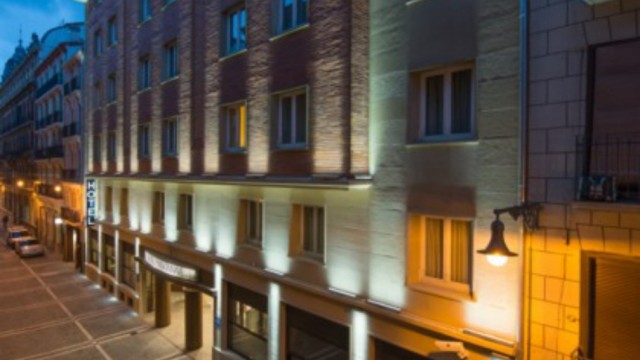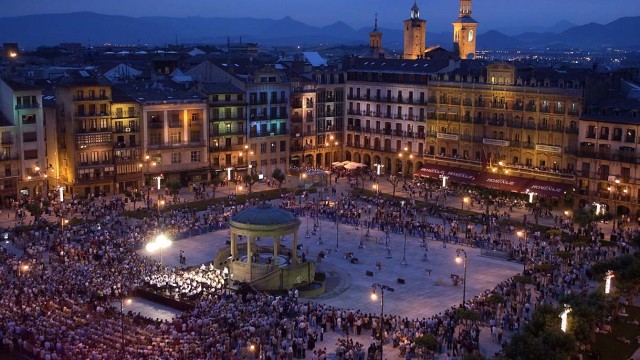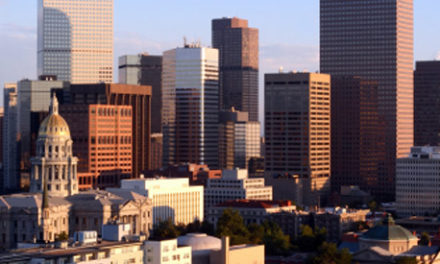When most people think of Pamplona, the annual Running of the Bulls in early July is likely one of the first things that come to mind. And that alone may be enough to draw the attention of some who plan incentive trips. But there are many other business reasons throughout the year that will pleasantly surprise those of you who haven’t organized or visited this green, walled city and the province of Navarre in north east Spain (it shares a 100-mile border with France).
 “Pamplona is an attractive, mid-sized city (a population of about 200,000) with excellent facilities and modern venues, superb gastronomy with authentic flavors, and is easily accessible from the United States,” says Carola Seseña, Consul in Charge of Tourism Affairs for the Tourist Office of Spain in Chicago.
“Pamplona is an attractive, mid-sized city (a population of about 200,000) with excellent facilities and modern venues, superb gastronomy with authentic flavors, and is easily accessible from the United States,” says Carola Seseña, Consul in Charge of Tourism Affairs for the Tourist Office of Spain in Chicago.
It’s also the political, economic and cultural center of the region. In addition to its state-of-the-art convention center, Baluarte, Palacio de Congresos y Auditorio de Navarre, two academic institutions are also helping to drive business meetings to Pamplona.
Clinica Universidad de Navarra. This non-profit hospital is one of only a small number of private hospitals in Spain. It’s recognized as a leading institution for cutting-edge medical tourism — where you can visit and receive a complete and holistic assessment in 24-hours. 77% of its patients are from within Europe, 11.5% from Central and South America and 5.1% come from North America.
But for the meetings industry, what’s really unique is that it’s a leading research facility currently conducting 170 clinical trials related to conditions for Alzheimer’s, Parkinson’s, Oncology, Haematology, Hepatology, Psychiatry, Cardiology, Neurology and Ophtalmology. They frequently present their finding at the annual Radiological Society of North America meeting held in Chicago, and its researchers and physicians are happy to speak at industry meetings held in Pamplona.
Universidad de Pamplona’s Museum University of Navarra. Designed by Rafeael Moneo, this privately funded, modern and fine art museum has 12 exhibition rooms (which includes an extensive photography collection), classrooms and workshops, an auditorium and library. There’s also a restaurant and outdoor terrace here that are worthy of an early afternoon reception. It was opened in January 2015.
Pamplona’s cuisine also lures many people. Each year in the spring the hotels and restaurants organize pintxos week. Pintxos (which is Basque for pinchos or tapas) are usually enjoyed in a couple of bites along with a glass of Spanish wine. You can stand around the small bar where it’s served and then you’re off to the next place. And that’s the best way to enjoy a meal in Pamplona.
Pintxos week is a friendly competition that allows each chef an opportunity to create and showcase new creations using ingredients from the region, and the organizers award gold, silver and bronze awards to the best. More than 90 restaurants participate!
By the way, my tip to planners is to work closely with your event’s chef and request that they create a unique pincho for your program or event that reflects your theme — many of them will!
My other tip: Hire a great guide. My group spent nearly a week with Francisco Glaria Baines, who is an expert in Pamplona and throughout Navarra, and none of us regretted a minute of it.
Hotels in Pamplona, Spain
Pamplona has 22 hotels suitable for business travel, meetings and events, including one 5-star hotel, 13 4-star hotels, six 3-star hotels and two 2-star hotels. The city has a total of 36 hotels and 2,400 rooms.
Depending on your interest, it seems you’ll want to focus your attention on the old quarter and the narrow streets that surround Pamplona Cathedral, the Town Hall and the Plaza del Castillo square (walking is the way you will want to experience this city). A few considerations include:
- Hotel Maissonave. This 4-star business-friendly hotel is in the heart of historical Pamplona. It has three room types, including standard (19 square meters), superior (29 square meters) and suite options (31 square meters). They’re nicely appointed and stylish. There’s also a disabilities-friendly room (the hotel is certified for those with special needs). It even has a small workout room with an elliptical machine (which I used for 20-minutes one day). Breakfast is served just off the lobby and has a nice number of options. Caravinagre is the hotel’s bar and gourmet cafe that’s located just off the lobby, and it’s a great spot to enjoy a selection of tapas, sandwiches and drinks. Hotel Maissonave was fully refurbished in 2013.
- Hotel Pamplona Catedral. Located near the edge of the wall in the historic quarter, this hotel opened in 2015 and is most notable for its stunning Chapel Restaurant (formerly a convent chapel). The hotel has standard rooms, special rooms and suites with simple yet contemporary furnishings, and I particularly enjoyed opening the shutters along my wall of windows in the afternoon and morning. It has several options for private events, including a relaxing outdoor patio.
- Gran Hotel La Perla. This is Pamplona’s 5-star hotel and popularized by Ernest Hemingway — you can stay in his suite in room 201 — where other famous guests have also stayed. It has 44 elegantly appointed rooms with a small exterior balcony. Standard rooms are a comfortable 30 square meters. The Gran Hotel La Perla is a historic hotel that was completely renovated in 2007 — keeping some of its most iconic furnishings in the lobby and guest rooms. Want to stay here during the Running of the Bulls? Expect to pay about 1,000 euros for a regular room (usually runs an average of about 150 euros throughout the year), 2,000 euros for a suite and 2,250 euros for the Hemingway Suite (American actor Charlie Sheen stayed there in 2014, but you can stay here at other times of the year for 600 euros/night).
- Hotel Palacio Guendulain. This 4-star hotel was built in the 18th century and served as a family residence for more than two centuries. For those wanting to find a unique and historic spot to stay and host meetings or events, this is it. Palacio Guendulain has 25 guest rooms and suites with classic furnishings on the second and third floors — there’s an elevator, but you’ll really enjoy its classic staircase instead. The meeting rooms with 18th century artwork and furnishings. On the ground level includes a courtyard that also features a horse carriage built in the early 18th century as well as a porter’s chair.
- Parador of Olite. This four-star hotel is located about 40-minutes outside of Pamplona, but it’s in the town of Olite (see Day Trips in Navarre tab for more details). A portion of the hotel is part of the town’s historic palace-castle that was built in the 13th century and its gothic facade still remains. I actually stayed here for my first night visiting Navarre and Pamplona, and have to say that this medieval town and hotel truly capture’s the spirit of Navarre. And its restaurant Teobaldos is a fine way to introduce yourself to the food and wine of the region.
Conventions in Pamplona, Spain
Built in 2003 and located in the center of the city, Baluarte Congress Centre and Auditorium of Navarre is an impressive convention center on four levels with spaces for a full range of events. It’s contemporary in design: the exterior black stone is from Zimbabwe and the wooden floor is from Brazil. But the food and beverage is local, and they have a policy of sustainability. With 63,000 square meters of surface area, it’s one of the largest in Spain and has received Biosphere certification for its sustainability.
Meetings at Baluarte have mostly been for national programs within Spain, explains Javier Lacunza, director for Baluarte, who’s looking to expand with the US and European international markets. Pamplona is safe and one of the greenest cities in Spain, handling groups with as many as 2,000 attendees. Lacunza confirms that infrastructure is ready for international programs, quickly pointing to few examples that have been held here in the past, including:
- Open European Championship First Lego League (May 2014; 450 attendees)
- Mediterranean Oncology Society of Pediatric Otorhinolaryngology (2010; 1,500 attendees)
- X International Congress of Regional Anaesthesia (2009; 500 attendees)
Some upcoming international cultural events include:
- International Documentary Film Festival Punto de Vista (Feb. 2016)
- Sarasate Live & Sarasate International Violin Contest (July 2017)
- Sanfermin Festivals Fireworks (Their terrace hosts fireworks nightly.)

J. Javier Lacunza, Director, Baluarte, Palacio de Congresos y Auditorio de Navarra in Pamplona, Spain. Courtesy image
Baluarte and Pamplona’s success within Spain can be attributed to how easy it is to get around and how the city and its infrastructure is so centralized, including Balurate itself. Lacunza explains that planners recognize Baluarte as a top notch venue in this city with superb gastronomy and great hotels. Plus it’s easy to do business here (including transfers).
Baluarte has a ground floor exhibition hall that’s lined with a wall of windows as well as a mezzanine level space that can be divided into meeting and exhibition spaces and conference rooms. Congresses usually take place in the ‘Ciudadela’ and ‘Luneta’ halls, which can accommodate up to 800 people.
Baluarte has large lobbies, an outdoor plaza, an impressive main auditorium with 1,036 theater seats and flexible staging options for general and keynote sessions and a 444-seat chamber music hall that’s perfect for concerts and other cultural events.
Baluarte hosted 390 events in 2014, including 160 for meetings, incentives, conventions and exhibitions. The others were for cultural events, including theater, opera, classical music and dance. So, if you’re looking for great public performances and shows when you’re in town, you’ll want to check Baluarte’s schedule year-round.
Things to Do in Pamplona, Spain
Pamplona is a vibrant city where you can walk in Hemingway’s footsteps, experience tapas in its historic streets and enjoy its monuments. Here are a few suggestions for things to do in Pamplona:
Pamplona Cathedral is one of the more popular places to visit with buildings dating back to the 11th, 12th, 15th and 18th centuries and has a neoclassic facade. There’s a museum with a permanent exhibit that looks at human atrocities.
Baluarte’s Lacunza points to the cathedral and exhibit as an insider’s tip to planners and VIP visitors. “The gothic cathedral and cloister and its occidens permanent exhibitions are absolutely breathtaking, especially if led by Gonzalo García, Cathedral Coordinator,” he says. And the cathedral has several indoor and outdoor spaces available for private concerts, meetings and events.
Pamplona City Hall is a central spot in the historic quarter, a 15th century building of baroque and neoclassic styles that was last renovated in the 18th century. Its historic significance is that it was located on a spot where three boroughs joined together and was established to end centuries of bickering and confrontations. Today, surrounded by old town streets and shops, it’s the ceremonial launching point of the fiesta of San Fermin each July.
Pamplona’s Castle Square is at the heart of the city. An imperfect four-sided area from which the narrow streets of the old town start, the square is where you’ll find locals and visitors alike. You can sit outside or inside the cafes as you enjoy tapas and watch the people go by. Café Iruña is as great today as it was when Hemingway enjoyed it during his visits. Tip: If you’re planning an event, there’s a private bar with a statue of Hemingway where can try to sneak a picture.
Enjoy Pamplona’s Pincho Streets. Sampling is the best way to experience the range of choices in Pamplona. And you can find several good pincho bars on two popular streets: San Nicolas (check out Baserri, La Mandarra de la Ramos and Otano) and Estefeta Street (check out Bodego n Sarrias, Esta Feta and Gaucho). Jesus Mari has been the owner of Bar Gaucho for 27 years, and he wrote two books on pintxos. Gaucho has a reputation for having some of the best pinchos in town.
Dine at Restaurante Rodero. Located in the city center near Park Crescent and the bullring (walkable), make sure you enjoy dinner one evening at Rodero, a Michelin star restaurant that creates classic and contemporary seasonal dishes using local ingredients. This family-run restaurant has two private dining rooms, and is a great way to relax and spend a few hours enjoying the tasting menus with friends and colleagues.
Dine at Abaco Bar and Restaurant. Located about 15 minutes outside the city center of Pamplona in their Museum of Modern Art in Huarte, this restaurant offers traditional Spanish cuisine and has been a consistent winner each year in the pintxos week competitions.
Visit during Running of the Bulls. While the 1/2 mile event with six bulls and eight steers only lasts from one- to three-minutes, the streets are filled with thousands who are wearing white pants and shirts and red bandanas around their necks and tied to their waists. And the town is known for its lively atmosphere at this time.
Day Trips in the Navarre Region
While you can thoroughly enjoy a few days in Pamplona without leaving, Navarre is a tranquil area with good cuisine, small towns and even access to the Pyrenees.
“Navarre is a land of diversity with very different natural landscapes in just a maximum of 75 minutes drive from the central hub in Pamplona,” Baluarte’s Lacunza explains. “[It offers everything] from deserts to forests, from high snow mountains in the Pyrenees to big water reservoirs and rivers… and the sea in the neighboring regions of the Basque Country and Aquitaine in France. This allows for an inmense set of activities.”
Whether you’re here for an incentive trip or looking to explore the region, you can easily enjoy a few unique day trips — and relaxing overnights. Some suggestions include the following:
Olite. Located about an hour outside of Pamplona, Olite (which translates to “new town” in Basque) is historic with narrow streets, has a plaza square (which is actually rectangle) and local shops that open and close based on Spain’s traditional work schedule. Though it has only a population of a little more than 3,000 people, this historic and walled city actually welcomes about 150,000 visitors each year. And it has three important venues that create an intimate experience that are steps within each other:
- The Royal Palace of Olite is a gothic and baroque cathedral that was built in the 13th century by King Carlos III with additional changes through the 17th centuries. This is now the town’s main visitor attraction, and it’s a unique special events venue.
- The Parador of Olite is located in a portion of the the town’s historic palace-castle that was built in the 13th century and its gothic facade still remains. The hotel and its restaurant, Teobalos, truly captures the spirit of Navarre. When visiting, also be sure to enjoy tapas at the restaurant at Hotel Merindad de Olite (it is here where I discovered and now highly recommend Homenaje Rosado, a wonderful local rose from the region).
- The Wine and Vine Museum of Navarra is where you can learn about the historical evolution of the wine making process, the soil and wines in this region of Spain — there are actually 100 wineries in Navarra, which is known for its Rose wines (tempranillo) as well as its chardonnay. You can also host special events here.
Monasterio de Leyre. Located about 30 miles outside of Pamplona, the Monastery of Leyre is located in a scenic town that is surrounded by woodlands. They offer a 45-minute tour that shares the history of St. Virila, including the Abbey Church (declared a National Monument). Throughout the year they also host organ concerts and recitals, but you can also take part in its daily liturgies if you wish. The monastery has a hotel, restaurant and bar. If you’re bringing a group, it’s possible to organize VIP tours, tours with tastings or tapas options for groups. a tasting of mid-morning or afternoon tapas.
Elizondo, Spain is the largest town in the northern part of Navarre that’s near the Pyranees, and you’ll feel like you’re the only visitor there. But it’s a lovely town where you can stop and enjoy lunch at Sanchotena restaurant and stroll through the streets to shop. Before lunch, I discovered Malkorra, a shop that specializes in chocolate and pastries. I guess it’s a good thing that lunch doesn’t start before 2 p.m.
Learn to make and enjoy talos. Located about 30 minutes north of Pamplona and near the Pyranees, consider an afternoon stop in Amaiur-Maya, Spain. There, you’ll have a chance to meet Felipe Oyarzabel Ibarra and Isabelle Gallego of Amaiurko Errota, a tiny cottage where they mill corn flour (powered by a small stream). For literally just a few euros they will teach you to make talos — the Basque version of tortillas made of corn flour and water. They then fill the freshly made talks with charizo and and a goat’s milk cheese, and you can have lunch (or an evening meal) outside on their picnic benches with locally made cider. With its unique experience and friendly owners, this is definitely something that planners will want to keep in mind.
Float in a thermal spa pool. Located a short 10 minutes away from Amaiur-May is Hotel Balneario de Elgorriga, a hotel and spa that has a thermal pool that combines mineral waters from the region along with enough salt to allow you to literally float on your back with ease. It has stations that allow you to swim upstream, massage jets and a seated area with lumbar jets. When you’re finished, you can relax in the spa’s other wet areas, including dry and wet saunas. For those interested in staying in this area of Navarra, the hotel has three room type categories, and ample space for small meetings.
For more information about business travel, meetings and events in Navarra and Pamplona, contact the Navarra Tourist Board.
Pamplona Logistics
Spain is easily accessible from the US with non-stop flights to Madrid from Chicago, New York, Miami, Los Angeles, Boston and Washington DC using Iberia Airlines of Spain. “Plus a change of planes to Pamplona mean that attendees can easily leave the States late in the afternoon and be in Pamplona by 10 a.m. the following day,” Seseña adds.
(Check our Iberia Business Class Review for more details.)
While Pamplona requires a connecting flight to its airport – Noáin – through Madrid and Barcelona, the international airports of Bilbao and Biarritz also help make it easily accessible from within Europe and elsewhere around the world.
Modern roads link Pamplona with the rest of Spain and Europe and railway connections such as the Alvia train connect the city with Madrid in just over three hours and Barcelona in around four hours.
While you can certainly expect some winter weather, northern Spain is typically pleasant from March through November (warmer in the summer months). However, because it’s a very green region, you could expect some rainfall between eight and 15 days each month.
Tip: If you’re looking for a book to share with your guests to help them remember their time in Pamplona, consider Navarra a la Carta, photos by Patxi Uriz and text by Pedro Luis Lozano. This is a 323-page book that features Navarra’s beautiful sites, tastes and paths, and it’s fully translated into English.
Updated. Initially published September 9, 2015






















